► CLE Convertible replaces drop-top C and E
► Petrol or diesel, including an inline-six
► A supremely comfortable cruiser
Consider the anxiety when arranging a social event that sees two distinct groups of friends having to mix. A birthday party where the invite list contains your in-laws and the people you met at Craig David in Malaga ’08, for instance. The Mercedes-Benz CLE Cabriolet walks that tightrope every day, simultaneously trying to please those of you who bought the old C-Class and E-Class soft-tops, having been designed to replace both.
Does that sound like a tall order? In reality those discontinued cars are not as different as they might seem, with both sitting closer in spirit to the Audi A5 Cabriolet than the BMW 4-Series Convertible on the spectrum of comfort to sportiness.
Within that though there are degrees of diversity – the E-Class was synonymous with luxury and flamboyance, while the C-Class honed-in on tech and a degree of athleticism. We’ve already seen how the CLE Coupe can successfully straddle those lines, and now it’s time for the Cabriolet to try the same.
At a glance
Pros: Refinement, passenger space, supremely comfortable
Cons: The best engine ins the most expensive one, feels big on the road
What’s new?
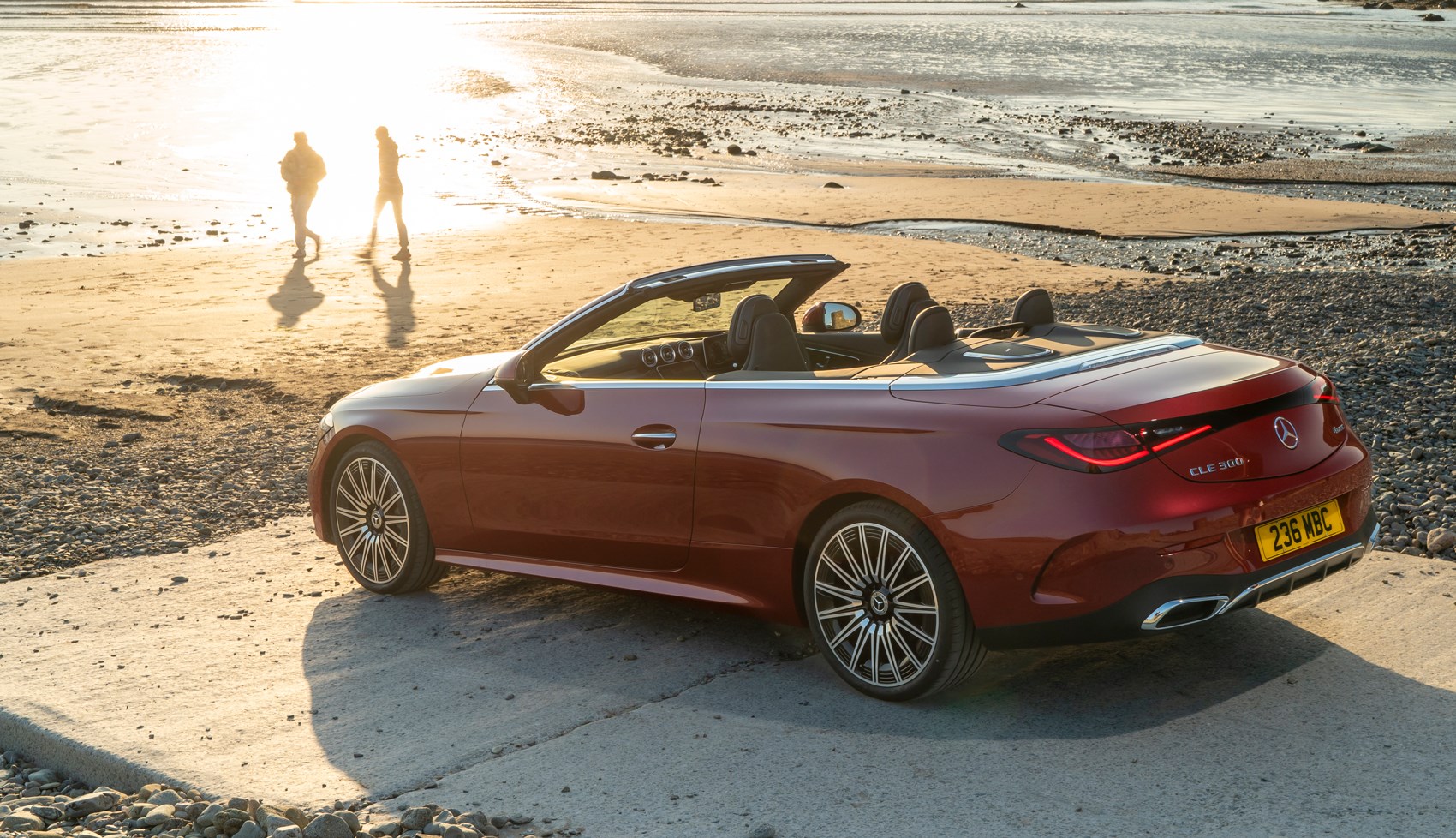
Like the CLE Coupe, the Cabriolet is about the same length as the outgoing E-Class Cabriolet and features the flashy dashboard from the C-Class. A big boot to enable longer trips away from home is still a key feature.
It’s aimed at providing roof-down thrills for four and to that end has undergone some aerodynamic honing to reduce the amount of wind in your hair, funnily enough, as well as improvements to the clever Aircap system, which pushes turbulent wind high above your head.
The engine line-up is the same as the CLE Coupe, with a selection of 2.0-litre four pots and a range topping straight-six. All come with a nine-speed automatic gearbox as standard, and 4Matic all-wheel drive is available too.
What are the specs?
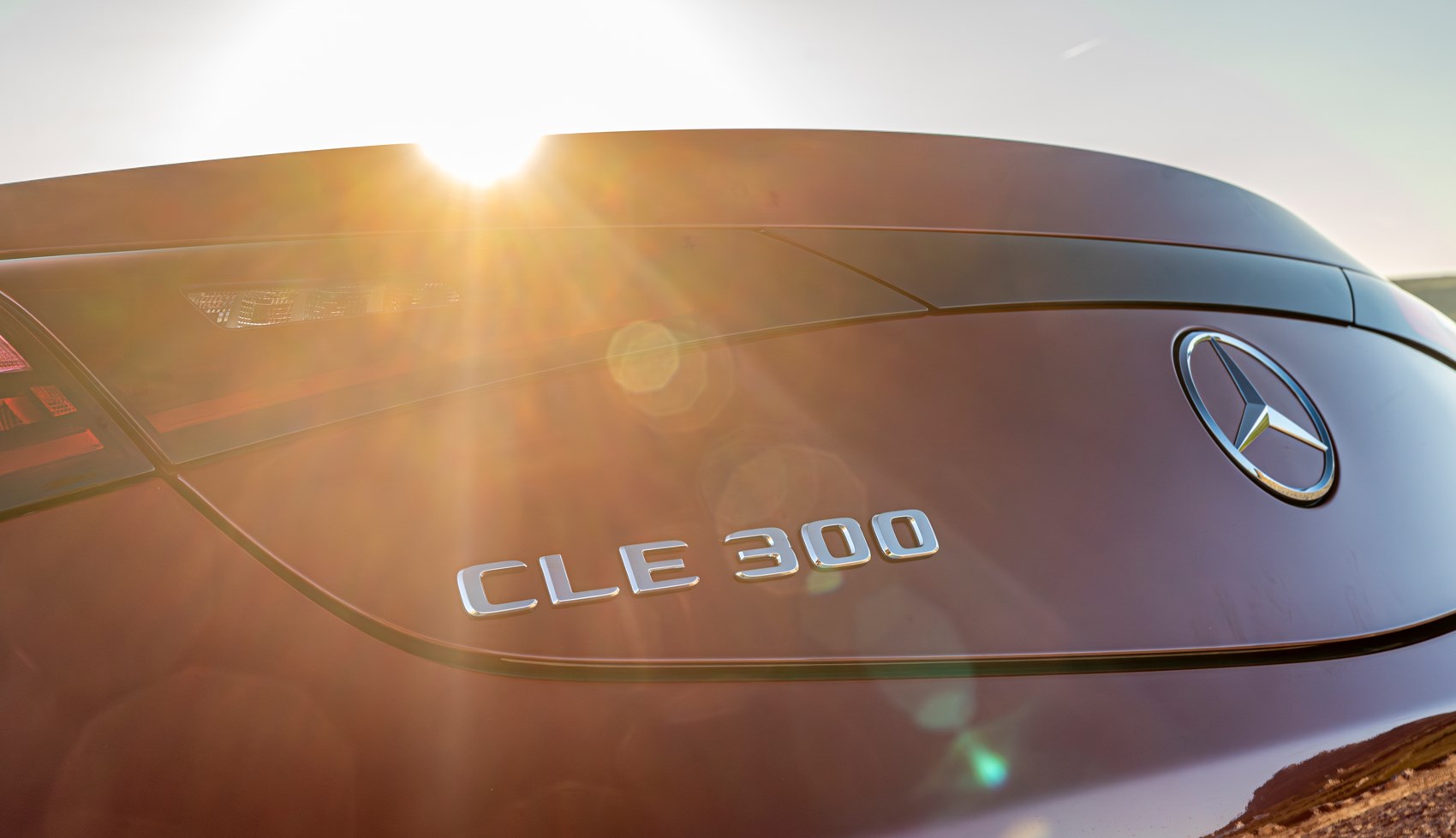
UK buyers jump straight in at AMG Line, which means all cars come with the Cabriolet Comfort package (hot air blowing Airscarf, Aircap, and electric luggage compartment separation) plus the Dynamic Select drive modes.
From there you can upgrade to AMG Line Premium, AMG Line Premium Plus and Premier Edition, with all sorts of niceties like digital LED headlights, a powerful Burmester stereo, and wheels up to 20-inches.
Depending on what spec you choose, there is a broad selection of wood and carbonfibre trim pieces to pick from, four standard interior colours and two in Nappa leather, plus three different shades for the roof.
Engines-wise it’s a pretty traditional choice of petrol and diesel, although the latter is admittedly a rarity these days. Previously a bit of a company car cabriolet hack, convertible oil-burners are not as attractive as they once were, but the option is there if you want it.
That motor (the 220d) matches the base spec petrol CLE 200 for performance, taking 7.9 seconds to accelerate from 0-62mph. Move up to the CLE 300 and you get 4Matic all-wheel drive and a punchier 6.6 second time. Finally, there’s the CLE 450 4Matic, which is much faster at 4.7 seconds.
There’s no PHEV or EV (perhaps unsurprisingly) but all the ICE engines are mild hybrids, comprising an integrated starter-generator and 48-volt electrics, so you can coast down to a stop. This also provides a power and torque overboost function, which is much more exciting.
How does it drive?
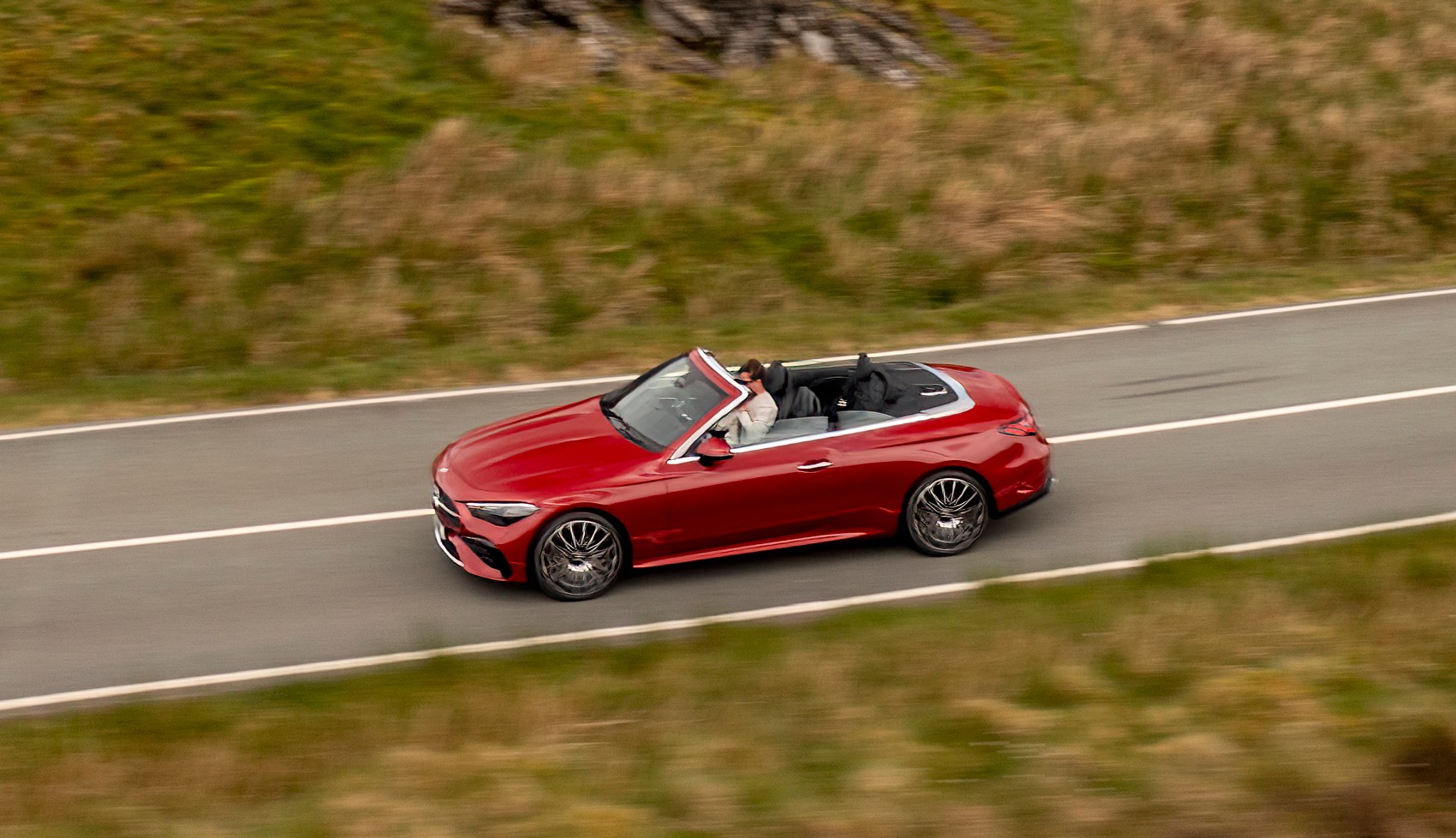
It’s a car capable of being hustled but is infinitely more enjoyable when you take your time. It feels large on skinny roads, even if the four-wheel steering does an admirable job of shrinking the radius of each bend. But on wider tarmac, it’s a cabriolet to enjoy your time in.
The CLE 300 offers better pulling power than the lower output cars but it still has a slight flat-spot in the lower rev range. This is successfully filled by the CLE 450’s extra displacement, which brings with it flexibility and a deeper well of torque held in reserve.
That’s what you should pick it for, rather than the soundtrack, which is enjoyably raspy at low engine speeds but restrained thereafter and never really builds to the sort of screaming symphony you want it to. All the cars we tested augment themselves with additional sound piped into the cockpit in the sportier modes, and it’s effective, but that noise doesn’t bounce off an igneous rock wall in quite the same way as a loud exhaust.
In Comfort they were both almost disarmingly quiet, enabling a kind of peaceful progress that suits this car down to the ground. Of the two the CLE 450 was the easier to live and the more charismatic, but the CLE 300 will do just fine.
That’s largely down to the smooth, relaxing momentum the 300 delivers, and keenness to rev-out compared to the six-pot, which had a far stronger mid-range and brought a level of performance that seemed a shame to exploit in such a wafty car.
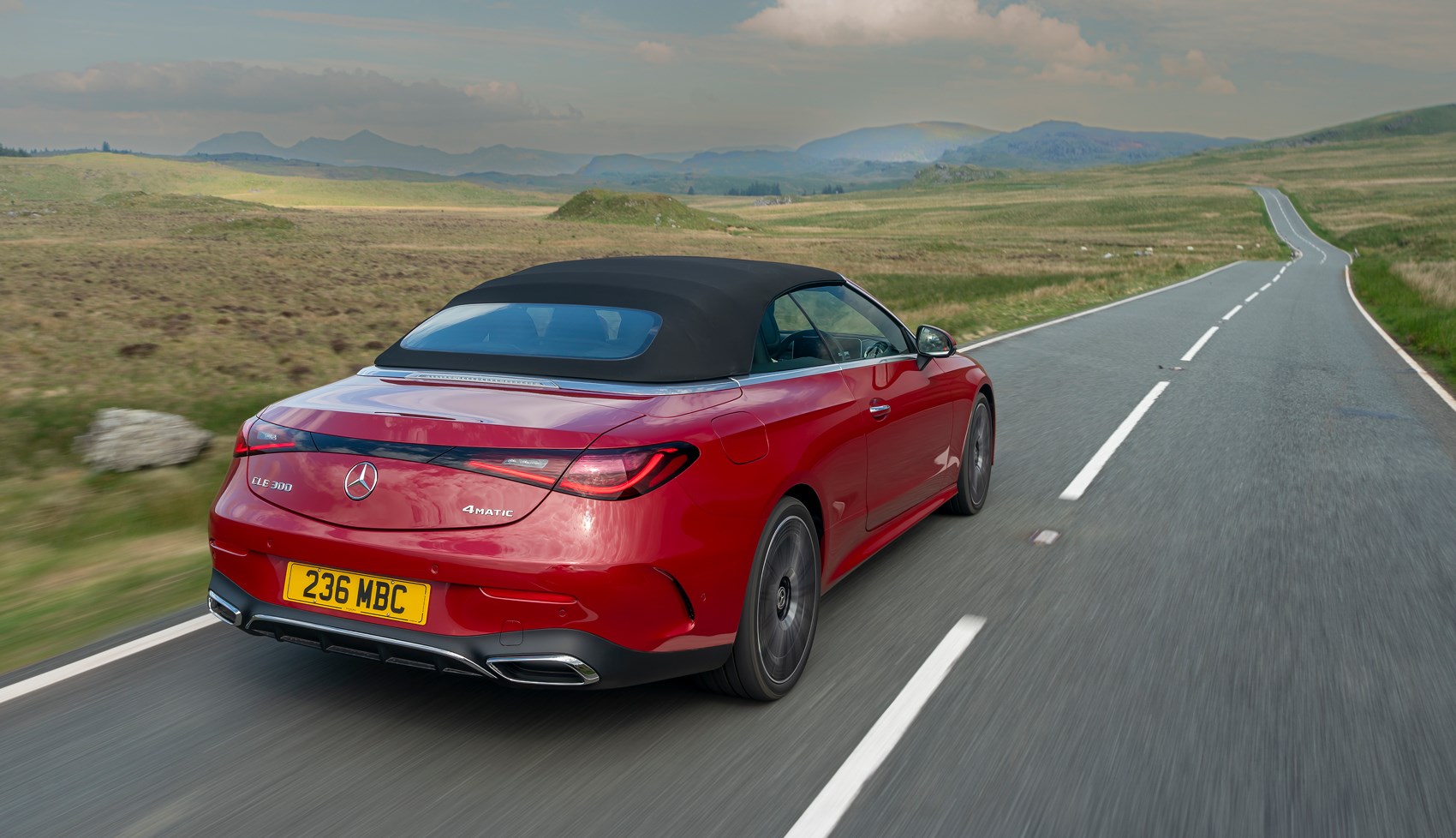
It’s not unpleasant to drive quickly – far from it really, thanks to confidence inspiring all-wheel drive that always seems to have enough grip, and linear, predictable steering. But as we noted in the CLE Coupe review, there’s a lack of driver engagement at speed, so you’re supported, but not encouraged to stretch it. A position that suits it well overall.
We’ll also have to hold off assessing the ride quality of the standard 15mm lowered sports suspension until the car arrives in the UK, although the signs are good – it felt comfortable on the cracked and broken Spanish tarmac we sought out, and the Coupe upon which this car is largely based is a good match to home roads.
On those surfaces it was possible to detect a bit of shakiness in the cabin and in the steering column – not to the extent that the seats were squeaking against each other, and at a level that seems reasonable for a convertible of this length.
What about the interior?
As touched upon earlier it’s instantly recognisable from the C-Class, which is a somewhat acquired taste of shiny wood trim, large digital screens, and seemingly one air vent too many.
UK cars get leather on the dash top and colour-customisable LED lighting accents as standard, and in combination this makes for an eye-catching interior, which is what you want in a car designed to live with its roof down.
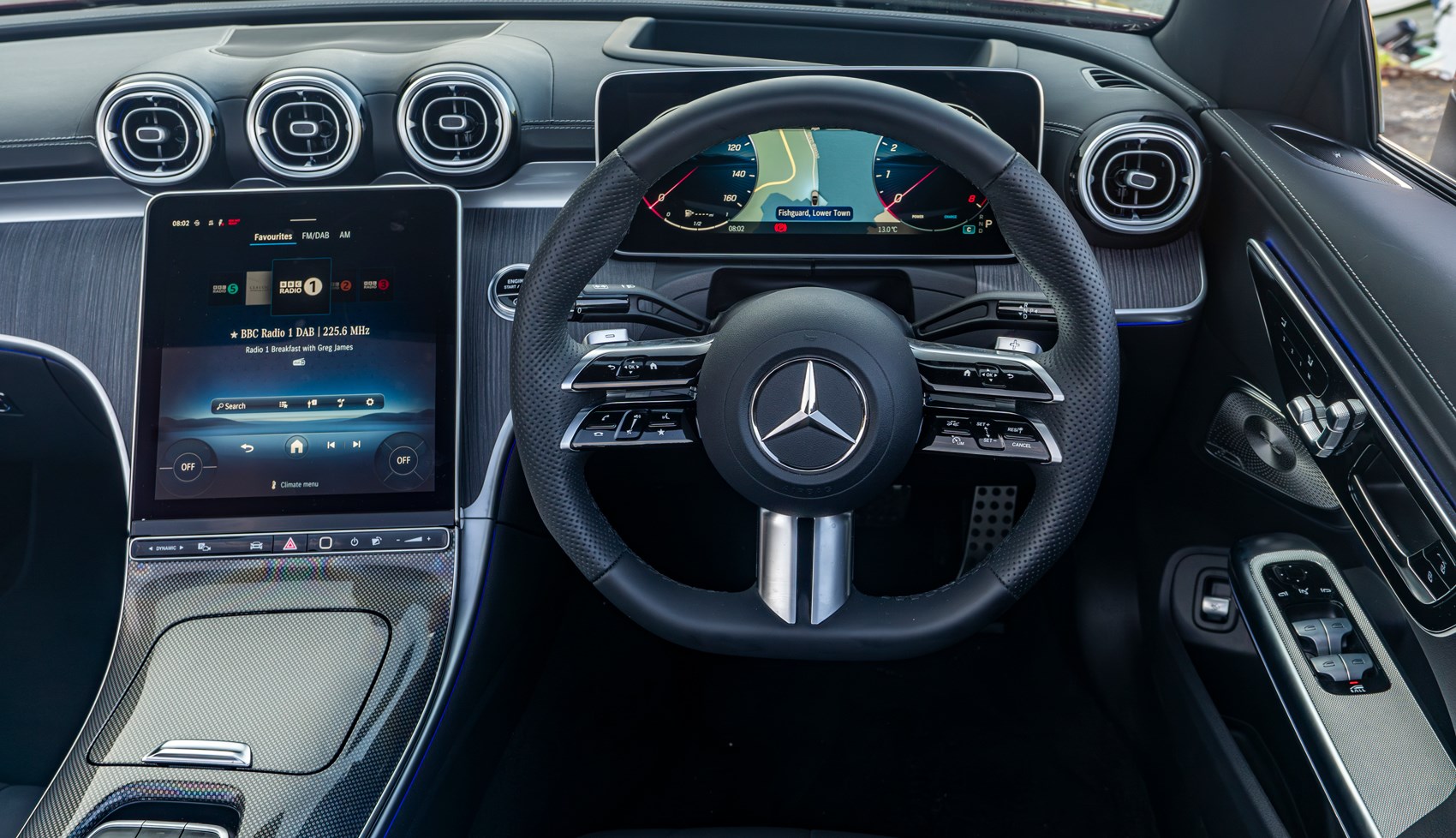
There are two screens, a 12.3-inch display for the driver that is controlled by two rows of touch-sensitive buttons on the steering wheel. This has proved divisive, but I liked it, and found it easier to navigate unsighted than in other cars where all buttons are clustered together.
The portrait-oriented 11.9-inch central touchscreen can be tilted electronically from 15 to 40 degrees if the sun is glaring on it, and this genuinely worked really well. There’s a big difference in the angle from laid down to upright and we were able to enjoy high-contrast bright colours as the sun made its way across the sky.
This is handy because most of the car’s auxiliary functions are controlled by this screen, but thankfully the menu is made up of large, easy to jab buttons. Bringing the age demographic of the target audience down a notch is the inclusion of third-party apps including TikTok, and “date night” mode that lights the interior pink and plays romantic music through the stereo.
The seats have a special coating that reflects the sun’s rays to keep them cooler – we tested this by parking the car up in the midday heat while we read about the local birds. Our test car’s black seats were surprisingly cool on return.
There’s good shoulder room in the rear and more legroom than you might expect, even behind a tall driver. But if you’re over six feet tall you’ll find your head making contact with the roof, so it’d be best to leave it down for lofty passengers.
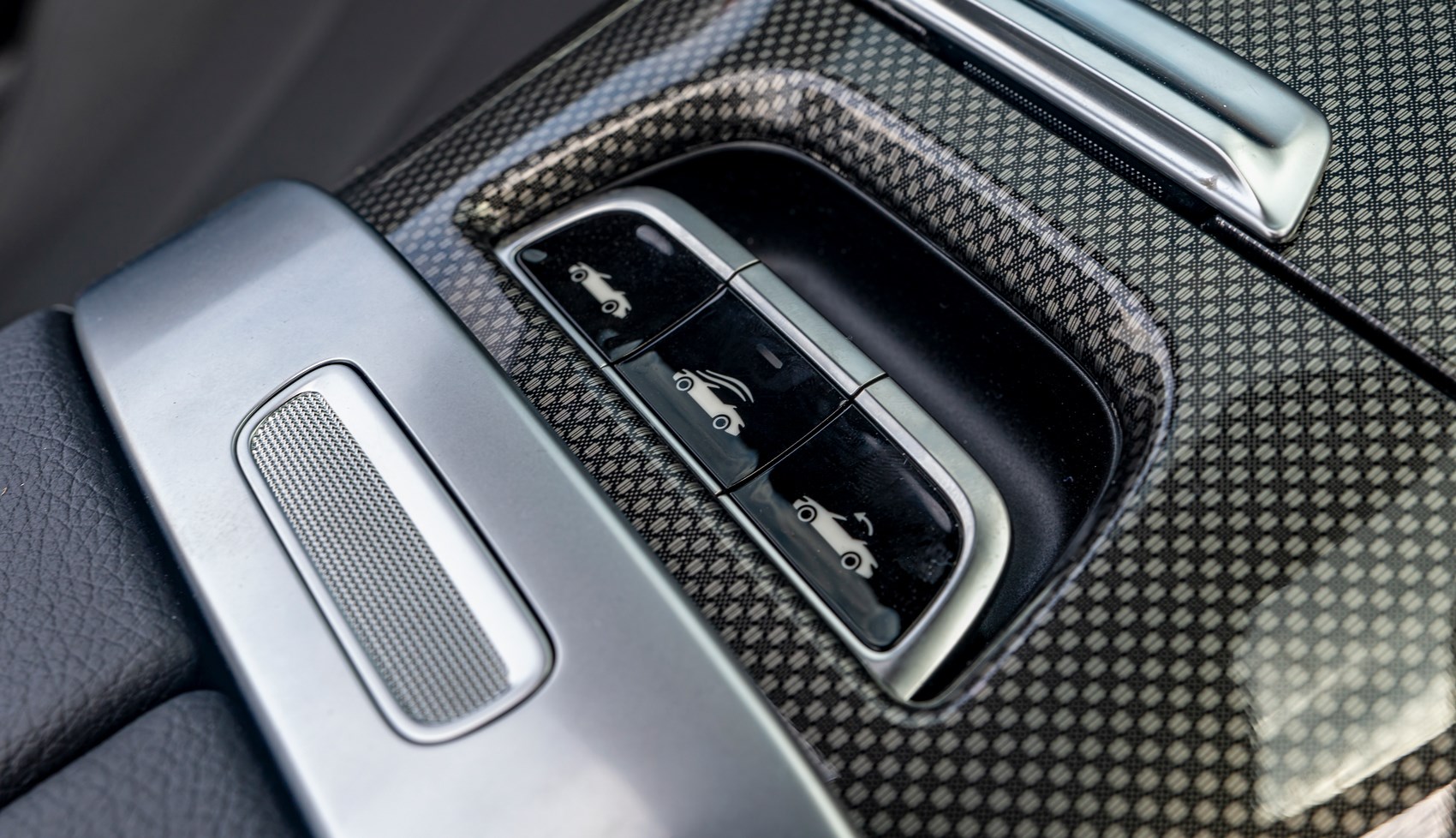
Handily, dropping the roof takes just 20 seconds and can be done on the move, up to 37mph. The mechanism has undergone some fettling too – it is fully electric now, with no hydraulic assistance, so it’s virtually silent. As a result, it feels much more luxurious to use, minus all the whirring and clunking of an old soft top.
The Aircap feature has been refined too – this is a special spoiler that sits at the top of the windscreen, and a large diffuser that pops up from the rear seats. We’ve seen this on Mercedes convertibles before, but the improvements made in the CLE are really very impressive.
It now stands somewhat taller and further down the screen, in a position optimised by wind tunnel testing. This causes the air flowing over the top of the car to continue doing so until it reaches the diffuser at the rear, rather than tumbling into the open cabin and causing all sort of turbulence.
It does so very effectively – in truth it adds a bit of noise compared to having it stowed, but that’s a trade off you have to balance against the effect it has on the air in the cabin. Not only does the bluster at head level reduce, but it also apparently helps retain heat in the cabin during colder months.
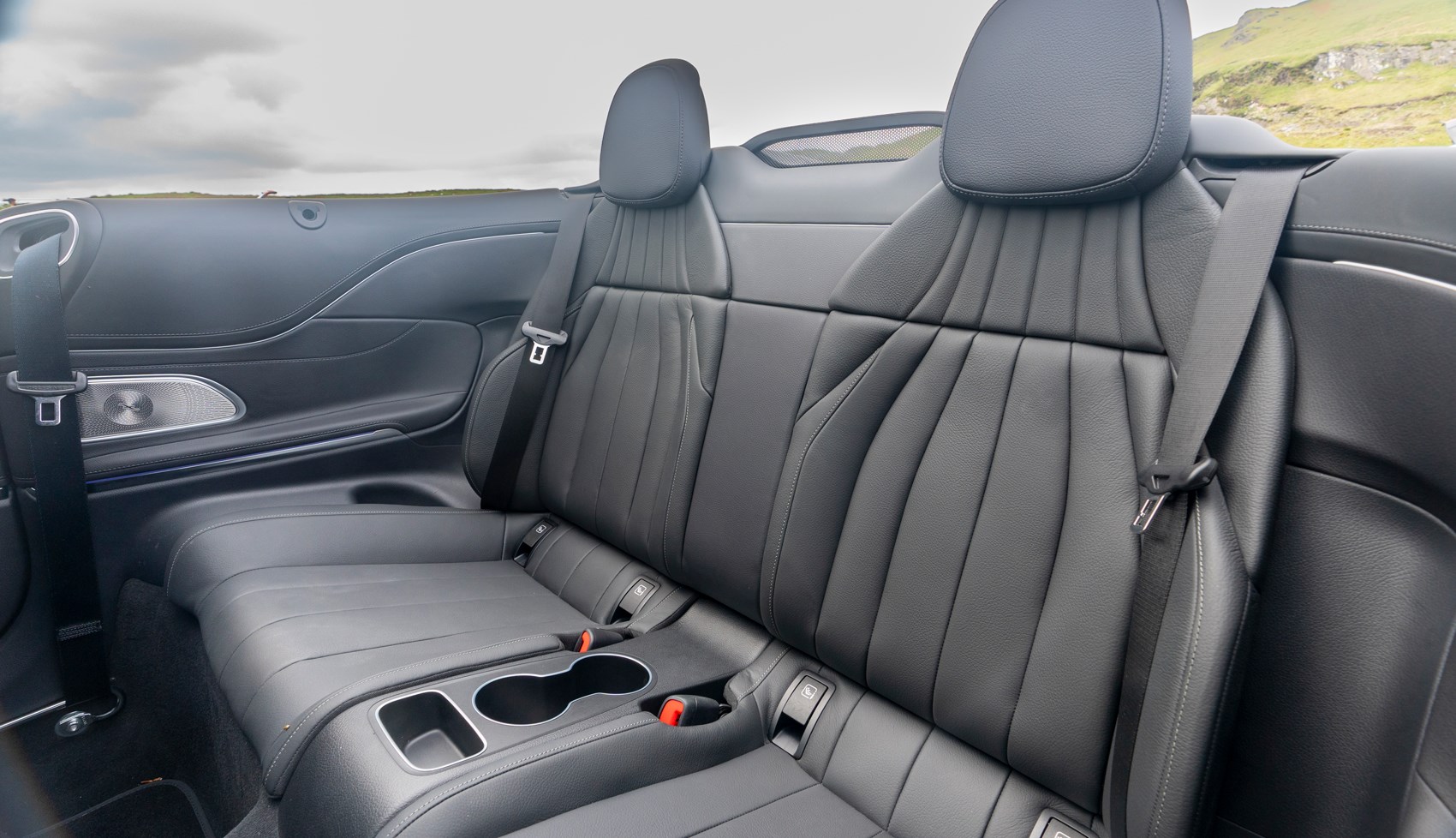
That’s something we’ll have a better chance of testing in the UK than the Canary Islands, likewise the Airscarf feature, which blows hot air around your shoulders and neck.
Verdict: Mercedes CLE Cabriolet
As a cabriolet the Mercedes-Benz CLE makes even more sense than as a coupe, where it’ll always come up against comparison with sports car rivals. A four-seater soft-top is plainly not a sports car and will never have to defend itself as such.
That means it can continue doing what it does best – offering a huge level of luxury and refinement that will encourage owners to keep the roof folded year-round, thanks to the Aircap and efficient heating (including the brilliant Airscarf), so you’ll get more top-down motoring for your money than rivals.
In combining two distinct cars the CLE Cabriolet somehow manages to be more than the sum of those parts, and should satisfy the needs of both camps while maintaining a character all of its own.